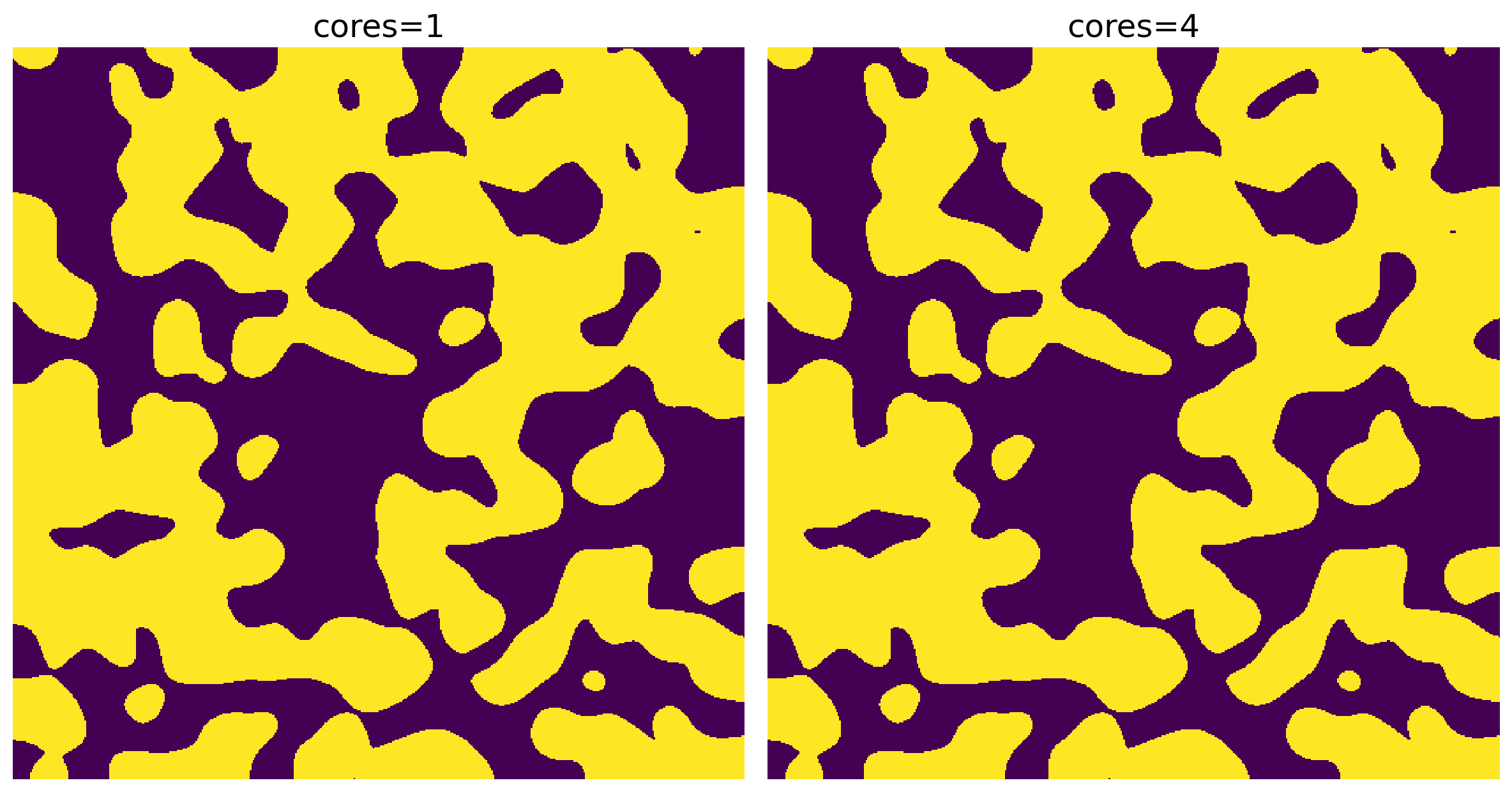chunked_func#
Performs the specfied operation one “chunk” at a time to save memory.
Import Packages#
import numpy as np
import porespy as ps
import scipy.ndimage as spim
import matplotlib.pyplot as plt
import skimage
from skimage.morphology import disk
import time
ps.visualization.set_mpl_style()
[17:43:40] ERROR PARDISO solver not installed, run `pip install pypardiso`. Otherwise, _workspace.py:56 simulations will be slow. Apple M chips not supported.
func#
We will perform a dilation using scipy’s binary_dilation
func = spim.binary_dilation
im and strel#
This function takes a binary image and a structuring element as arguments
im = ps.generators.blobs(shape=[500, 500])
strel = disk(3)
plt.figure(figsize=[6, 6])
plt.imshow(im)
plt.axis(False);

overlap, divs, and cores#
If overlap is None it will always be the radius of the structuring element. divs is the number of chunks to divide the image into in each direction and cores is the number of cores to use. The more cores the faster.
start = time.time()
x1 = ps.filters.chunked_func(func=func, overlap=None, divs=4, cores=1, input=im, structure=disk(3))
pause = time.time()
x2 = ps.filters.chunked_func(func=func, overlap=None, divs=4, cores=4, input=im, structure=disk(3))
stop = time.time()
print('OPERATION TIME:')
print('cores=1:', pause-start, 'seconds')
print('cores=4:', stop-pause, 'seconds')
fix, ax = plt.subplots(1, 2, figsize=[12, 12])
ax[0].axis(False)
ax[0].imshow(x1)
ax[0].set_title('cores=1', fontdict={'fontsize': 18});
ax[1].axis(False)
ax[1].imshow(x2);
ax[1].set_title('cores=4', fontdict={'fontsize': 18});
OPERATION TIME:
cores=1: 0.04030728340148926 seconds
cores=4: 0.01732468605041504 seconds
